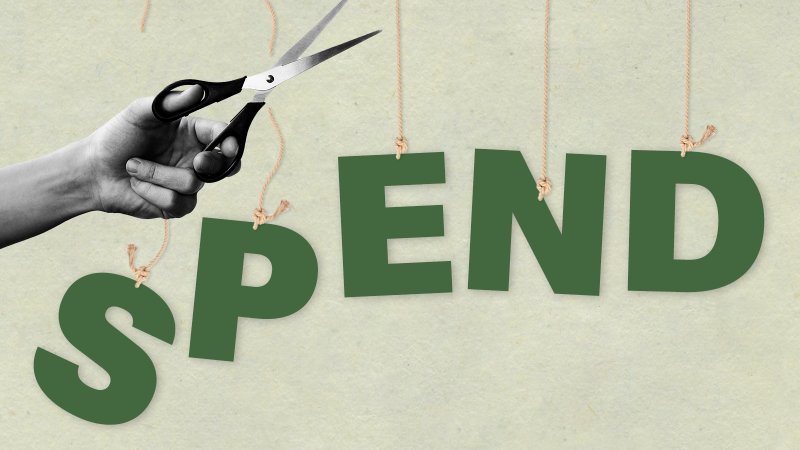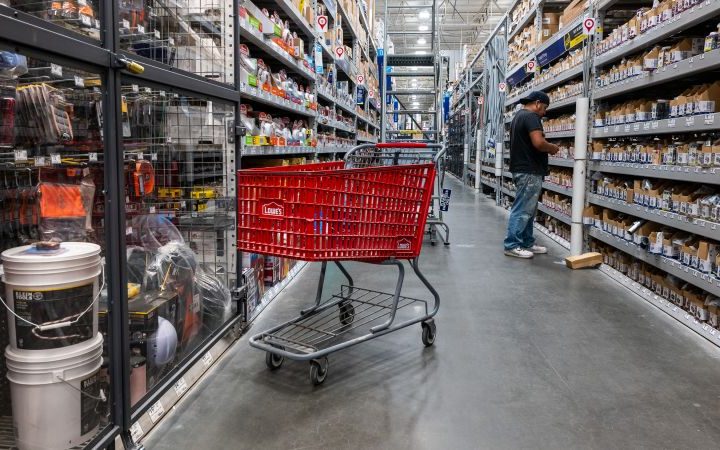Not even two years of soaring prices and mounting interest rates have stopped Americans from opening their wallets and tapping their credit cards.
The consumer’s willingness to keep paying high prices has kept the US economy relatively strong, but that attitude could soon be shifting. Some experts think the combination of high housing costs, rising credit card debt and shrinking savings could mean the end of post-Covid splurges, maybe even as soon as this year’s holiday shopping season.
“Headwinds are going to eventually force the consumer to buckle, and I think that we’re going to see consumers have to pull back on spending for a quarter or two,” said Erik Lundh, a principal economist at The Conference Board.
Here are the pressures consumers are facing that could cause a spending slowdown.
Buying and paying for a house costs Americans more now than at any point in almost four decades. Thanks to strong demand and a limited supply of new homes – even as mortgage rates have more than doubled in the past year – it now takes nearly 41% of the median household’s monthly income to afford the payments on a median-priced home, according to research from Intercontinental Exchange (ICE). The last time housing payments cost that much was in 1984.
Housing payments are only part of the problem. The Freddie Mac 30-year fixed mortgage rate as of November 16 was 7.44%. A new homebuyer in October 1981 carried an 18.45% mortgage rate, or 55% of the median income. But the median home price that month was proportionally much lower than today – $70,399 ($231,902 in 2023 dollars), or 3.69 times the median income. The median home price over the past two years has ranged from roughly five and a half to six times the median income – $445,567, as of October. That ratio is higher than at any point since ICE began collecting data, including during the housing bubble of the mid-2000s.
Inflation has also impacted spending on major purchases. Balances on non-housing loans have more than doubled since 2003, totaling roughly $4.8 trillion, according to data from the New York Federal Reserve. More than $500 billion of that debt accumulated just in the past two years – a bigger jump than any other two-year period since 2003, the earliest year available.
Some of that debt comes from skyrocketing car prices, but credit card balances are growing the fastest of all – roughly 34% from the fall of 2021. Student loan and car loan balances have grown by 10% or less over that same period of time, although student loan debt could begin to climb now that payments have resumed.
One important caveat is that this data is not adjusted for inflation, and personal incomes have also grown since the pandemic. The national average wage rose by more than $8,000 from 2020 to 2022, according to the Social Security Administration. That’s the largest increase over two years since 1982.
Keeping up with high prices not only has led to more credit card debt, but also more consumers are falling behind on the payments. During the third quarter, 5.78% of credit card balances became seriously delinquent (90 days or more behind on payments), accounting for the largest share of new serious delinquencies. Since the first quarter of 2022, the rate of newly serious delinquent credit card debt has risen roughly 90%.
Student loan debt previously saw the largest rates of newly seriously delinquent balances until the federal government paused payments in March 2020 because of the Covid-19 pandemic.
A study released by the San Francisco Federal Reserve earlier this year revealed one important clue as to why consumers are continually willing to pay higher prices: High levels of excess savings.
Households were saving hundreds of billions more dollars per month in 2020 and 2021 compared to the pre-pandemic trend, according to the SF Fed. One big reason those piggy banks got so full was the “refinancing boom” that occurred during that time of historically low mortgage rates. From the second quarter of 2020 through the end of 2021, 14 million mortgages were refinanced, resulting in an estimated $430 billion of equity being extracted through either lower monthly payments or cash-outs, according to New York Fed research.
“Under lockdowns and the worst of Covid-19, consumers were afraid to go out,” Lundh said.
That meant all that money that would have been spent on goods and experiences pooled up in people’s piggy banks instead.
As the pandemic waned, consumers unleashed a pent-up demand for experiences denied by Covid, Lundh said. And for the past two years, Americans have been spending all of those savings, even as prices and interest rates have climbed higher and higher.
During the pandemic, consumers accumulated $2.1 trillion in excess savings. As of June 2023, they’ve spent $1.9 trillion of it, the SF Fed concluded.
“The consumer is going to have to take a breather for a little bit,” Lundh said.
And that would mean Americans may be forced to finally pull back on their post-Covid spending spree.
“At a certain point, this debt becomes unsustainable, and there’s no more savings left,” Lundh said. “And that’s what we expect probably to happen to the US consumer, towards the end of this year and into early 2024.”
Read the full article here






